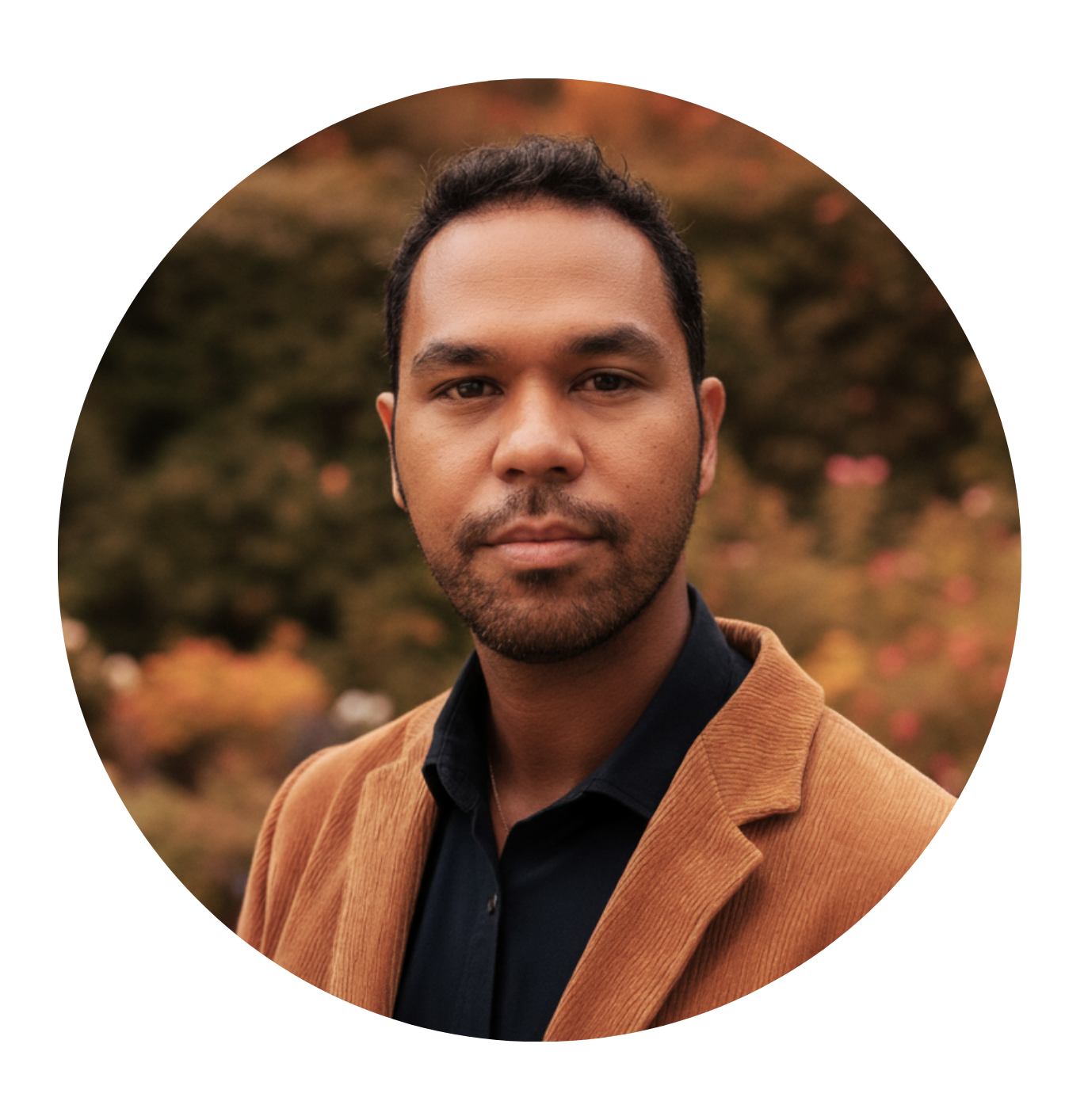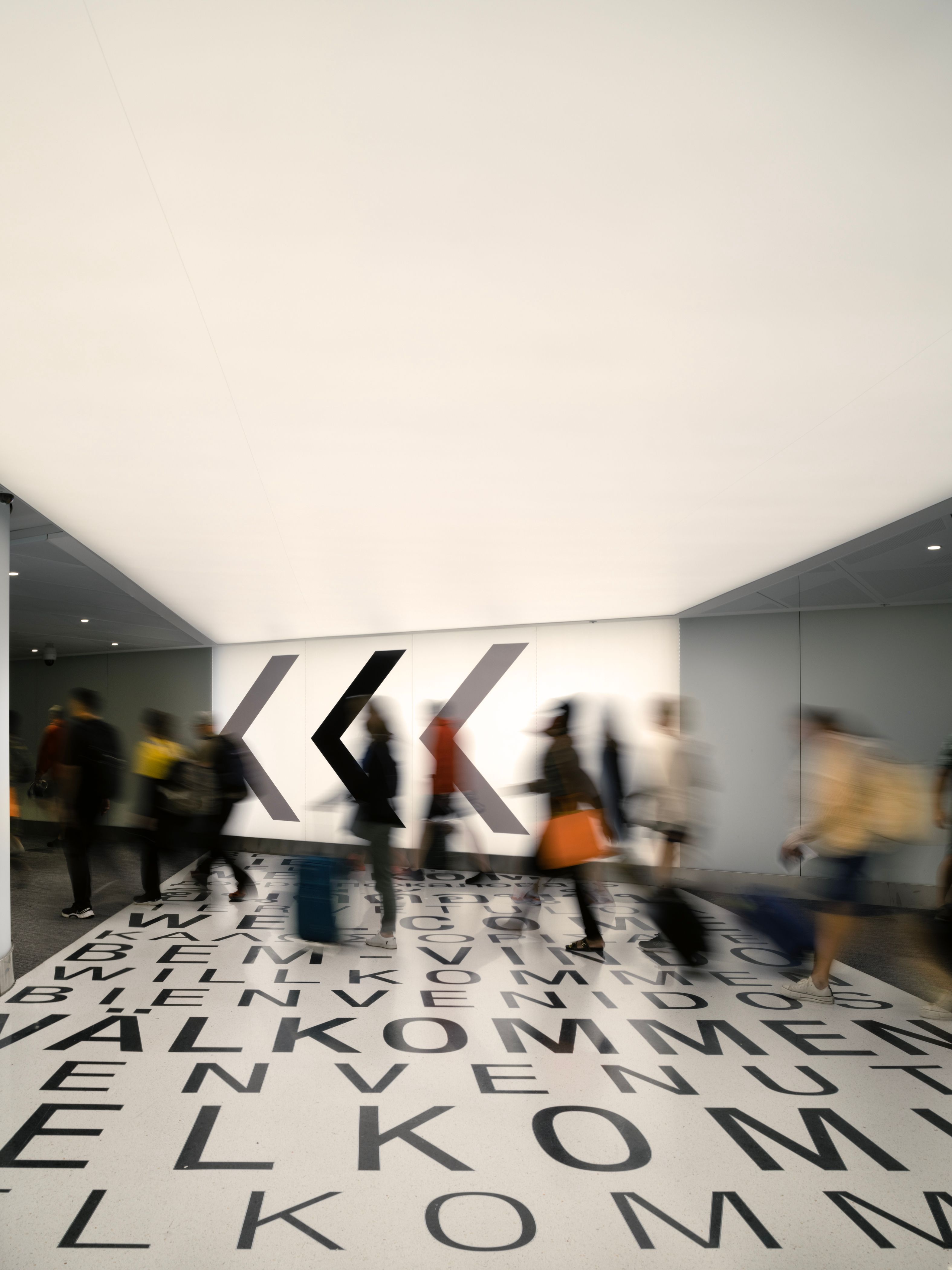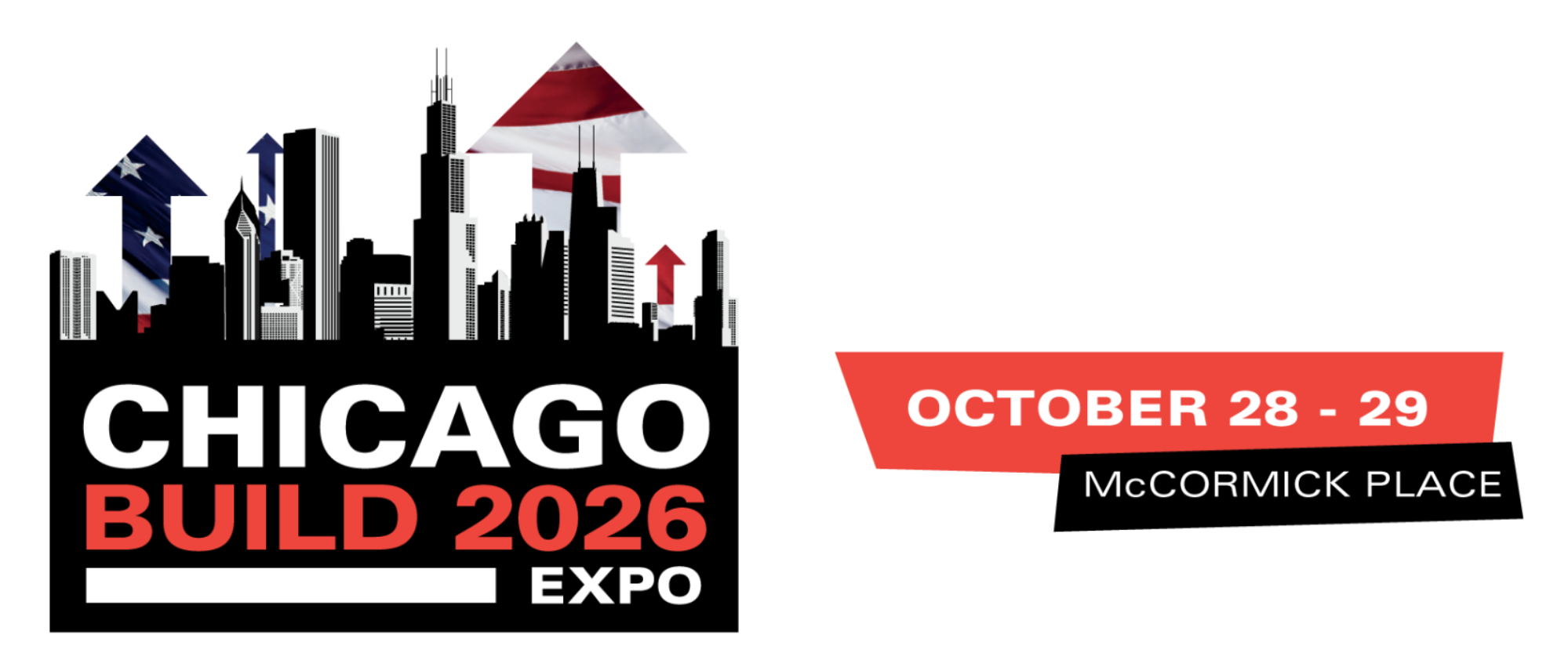Designing for All: The Importance of Accessibility in Construction
)
As cities evolve and project demands grow more complex, accessibility can’t be treated as a checkbox - it must be a core design strategy. Inclusive design reframes how we plan, build, and operate spaces by recognizing the full spectrum of human experience: mobility and sensory needs, neurodiversity, cultural context, caregiving realities, and the many temporary circumstances we all navigate. When embedded from the start, it delivers more than compliance - it creates environments that are intuitive, dignified, and welcoming for everyone, from transit hubs to restrooms and beyond.
For this article, we interviewed Francisco Lasta, an occupational therapist and inclusive design leader at GFT, about practical tools, project lessons, and why designing for real people is simply better design.
 About Francisco Lasta
About Francisco Lasta
With a clinical background spanning pediatrics to aging adults, Francisco brings deep insight into how to create more welcoming, supportive environments that meet the needs of all of us. He directs the firm’s inclusive design program, developing tools for architects and collaborating on projects that include transit stations, airports, sensory rooms, and inclusive restroom design. As an occupational therapist (OT) with nearly two decades of years of experience in the field, his work is grounded in how people actually engage with the spaces around them while highlighting the power of design to enable meaningful participation for people with diverse abilities and identities.
He has presented at SXSW, AIA Chicago, the American Occupational Therapy Association, NeoCon, and the Symposium to Re-envision the Center for Universal Design, among other speaking engagements, and has co-authored both a publication and a book chapter on inclusive design. Francisco also leads GFT’s Inclusive Design internship program, creating pathways for OT students to apply their skills in real-world design projects.
Can you explain what "inclusive design" means and why it is crucial in the construction industry?
“It might be simpler to begin with what inclusive design is not. Many people hear the term and think of accessibility or universal design. While those concepts are foundational, treating them the same as inclusive design reduces the impact inclusive design can deliver.”
“Accessibility ensures people can enter, move through, and use a space, focusing on physical and communication features like doors, ramps, signage, and information systems required by the Americans with Disabilities Act (ADA) standards. These elements are essential, but they often end up separate from the main design, such as ramps placed to the side of stairs or accessible entrances away from primary building entrances. Universal design builds on accessibility by creating features everyone can use from the start with a solution that caters to both the non-disabled and disabled, reducing the need for separate solutions and removing the exclusion that comes with segregated access.”
“In our built environment, accessibility and universal design primarily address the removal of physical barriers. Inclusive design goes further. It is an approach integrated into the design process, recognizing that people experience and engage with their environments differently based on their abilities, cultural backgrounds, life experiences, and immediate circumstances. It also considers more than just the built environment. To address the full spectrum of needs as people engage in meaningful activities in public spaces, inclusive design must consider multiple interconnected systems: technology integration, service delivery, communication methods, organizational policies, operational processes, and scheduling flexibility.”
“These design approaches coexist and build on one another rather than competing. ADA standards establish the foundation. Universal design strengthens it by eliminating separation and creating more seamless solutions. Inclusive design advances to create environments that support the full spectrum of human needs and experiences. Think of them as layers, each adding greater depth and consideration.”
“What makes inclusive design distinctive is its emphasis on engaging the people who will actually use the space, especially those traditionally excluded from design processes. It also involves professionals who bring different perspectives to the design table. As an occupational therapist, I understand how people of various ages, abilities, and backgrounds interact with environments. I know that our well-being depends on our ability to participate in daily activities. Our environment plays a critical role in supporting that participation, and this kind of perspective is essential when thinking about inclusive design.”
“More than just addressing physical barriers, this approach considers a broader spectrum of human experiences: neurodiversity, cognitive differences, cultural factors, economic realities, and temporary circumstances such as managing mobility aids, navigating with young children, and managing physical loads such as luggage. Inclusive design also provides multiple options because no single solution meets everyone's needs. Recognizing this diversity distinguishes inclusive design from approaches seeking one-size-fits-all solutions.”
“Teams that embrace this mindset ask: Who is missing from this design conversation? Who might be excluded by this approach? How can we expand participation in shaping our built environment? This requires design teams to develop cultural competence—the ability to understand, respect, and effectively work with people from different cultural and socio-economic backgrounds and lived experiences. At the same time, it is essential to recognize that inclusive design is an ongoing effort. We will not achieve perfection, and contexts and user needs evolve. Designers must remain willing to adapt and learn continuously, including deepening their understanding of diverse communities and perspectives.”
“Why does this matter in construction? People increasingly notice when environments support them and when they do not. Users quickly identify when spaces fail to meet their needs, and in our connected world, those experiences often become visible on social media platforms, where dissatisfaction can spread rapidly. Firms that adopt inclusive design principles deliver measurable value beyond compliance and increase their capabilities to develop innovative solutions. These design ideas often benefit the broader population and create significant competitive differentiation in the marketplace.”
What specific tools or strategies do you develop to ensure inclusivity in projects like transit stations and airports?
“I collaborated with our team of architects at GFT to develop our inclusive design guidelines based on one fundamental question: What activities happen in this space? From there, we ask who participates in these activities, what barriers exist to meaningful participation, and what opportunities can support people's engagement.”
“This activity-focused methodology informed the development of assessment tools that extend beyond basic access requirements. We analyze how spaces can address people's sensory, cognitive, psychological, and social needs. As the occupational therapist on the team, I bring specialized skills in task analysis that allow me to break down activities into their smallest components. My in-depth understanding of anatomy, physiology, biomechanics, psychology, neuroscience, and social science helps me understand human interaction with the built environment across multiple levels. I also draw on my knowledge of different types of disabilities and human development across the lifespan, which means I can consider how a 5-year-old experiences wayfinding differently than a 75-year-old, or how someone with autism processes sensory information compared to someone with low vision.”
 “This understanding becomes useful when you realize that while the demands and opportunities for engagement in airports may have similarities, there are also significant differences depending on the person and their circumstances. Consider these contrasting needs: a business traveler rushing to catch a connecting flight requires efficient, clear pathways and minimal decision points. A family with young children starting their vacation needs spaces to regroup, child-friendly facilities, and more forgiving timing. Similarly, someone with a cognitive disability may benefit from simplified, repetitive signage and clear visual hierarchies. In contrast, a person who is deaf or hard of hearing needs strong visual cues, clear sightlines to information displays, and backup communication systems when audio announcements fail.”
“This understanding becomes useful when you realize that while the demands and opportunities for engagement in airports may have similarities, there are also significant differences depending on the person and their circumstances. Consider these contrasting needs: a business traveler rushing to catch a connecting flight requires efficient, clear pathways and minimal decision points. A family with young children starting their vacation needs spaces to regroup, child-friendly facilities, and more forgiving timing. Similarly, someone with a cognitive disability may benefit from simplified, repetitive signage and clear visual hierarchies. In contrast, a person who is deaf or hard of hearing needs strong visual cues, clear sightlines to information displays, and backup communication systems when audio announcements fail.”
“When I analyze something seemingly simple, such as finding your gate in an airport, I examine far more than physical movement through space. I consider the cognitive load of processing directional information while managing luggage and time pressure. I evaluate the sensory challenges of distinguishing crucial announcements in noisy environments with competing audio information. I assess the psychological stress of navigation anxiety and how the physical design can either amplify or reduce that stress through clear sightlines, logical organization, and recovery spaces.”
“This multifaceted approach allows us to design transit environments that function effectively for people with various disabilities, but also for parents managing children, older adults, people with temporary injuries, international travelers dealing with language barriers, and anyone experiencing the inherent stress of navigating complex transit environments under time pressure. The goal is always to create environments where everyone feels supported as they engage with their activities with dignity and independence.”
How does your work incorporate the perspectives and needs of individuals with diverse abilities and identities?
“The keyword here is "incorporate" because it is about weaving diverse perspectives into every stage of the design process rather than consulting them at the end. We maintain partnerships with universities that allow us to conduct surveys and interviews with disability groups, significantly expanding the range of voices shaping our designs.”
“I also engage with my network of people with disabilities to develop a deeper understanding of their needs. They have the knowledge that comes directly from lived experience; there is no substitute for that insight. Their perspectives often reveal considerations I might miss, even with my clinical background and professional training. My experience working with people across various clinical settings gives me the breadth of expertise to identify patterns of need across different populations. However, lived experience brings a different level of depth that is essential to creating effective, inclusive solutions.”
“Another critical component is systematic site observation. We spend time in existing spaces, using activity-based assessment tools to develop a clear understanding of the activities that people actually perform in these environments and the challenges they face. What people say they need in surveys and what you observe them struggling with in real time can differ significantly. Observation helps us identify those gaps and understand the full context of people's experience.”
“This process is how inclusive design challenges assumptions about how spaces work and who they serve. You cannot design inclusively from behind a desk. You must go where people are, listen to what they are saying, and observe how they move through and use spaces in their daily lives. Each person brings unique abilities, challenges, culture, and preferences. We aim to create solutions that respect and support diversity rather than assuming one approach works for everyone.”
Can you share an example of a project where inclusive design significantly improved accessibility?
“I often point out the inclusive bathrooms, demonstrating how moving beyond ADA compliance creates supportive environments. Having the option of inclusive bathrooms is valuable if not practical in facilities that primarily rely on gender-segregated restrooms, as it provides an alternative that serves people who need flexibility without disrupting the existing system.”
“I've experienced this personally, and I saw and felt the difference. Traditional accessible bathrooms meet the technical requirements: grab bars, wider doors, and an appropriate turning radius. However, inclusive bathroom design considers the full spectrum of user needs and circumstances.”
“What makes these spaces inclusive is that they accommodate caregivers who may be of a different gender from the person they're assisting. They provide privacy for people who need to change clothing or use medical supplies. They consider families where parents need to help children of different genders. They recognize that some people with invisible disabilities may face questioning or judgment in gendered spaces.”
“The convenience, efficiency, and ease of well-designed inclusive bathrooms are significant. However, research also shows that even well-intentioned changes can create unintended barriers without thoughtful design. For example, when facilities simply convert their single accessible bathroom into a gender-neutral space without adding capacity, people with disabilities face longer wait times as the user base expands. When signage changes but the physical design remains inadequate, users still struggle with insufficient space for wheelchairs and caregivers, poorly positioned grab bars, a lack of adult changing tables, or insufficient countertops for people who need supportive surfaces as they address their health needs.”
“This type of space shows why inclusive design goes beyond compliance. ADA standards ensure basic wheelchair accessibility, but inclusive design asks: What about the parent needing help with their opposite-gender child? What about someone who requires privacy to address their medical condition? What about protecting people with invisible disabilities from questions about their right to use the accessible facility?”
“When we design inclusively, we create environments that work better for everyone, not just people with disabilities.”
What challenges do you face in advocating for inclusive design in construction, and how do you overcome them?
“Resistance often arises when you question long-standing practices. In most cases, pushbacks come from a lack of understanding. Misconceptions about cost, feasibility, or what inclusive design requires can slow progress.”
“That is why advocacy requires strategy. I focus on identifying specific concerns such as cost, timelines, or technical issues and addressing them directly. I also highlight long-term benefits and connect inclusive design to goals companies already value, such as putting people first, risk management, differentiation, and efficiency.”
“Education about inclusive design matters, but you must have credibility and trust as your foundation. I take the time to understand client priorities and constraints before showing how inclusive design helps them succeed. When people see that inclusive design supports their own objectives, buy-in follows.”
“As an advocate, I saw that advocacy becomes significantly easier when someone on the decision-making side also represents the people I'm trying to address through inclusive design. Representation matters. When there are people with disabilities, diverse cultural backgrounds, or varied life experiences at the table where decisions are made, the conversation changes. They bring lived experience and have powerful stories to tell that can't be replicated through education alone.”
What message do you have for architects and construction professionals about the importance of inclusive design in their projects?
“Stop designing for an imaginary ‘normal’ person who doesn't exist. Every project you create either includes people or excludes them. There's no neutral ground.”
“The person using a wheelchair trying to navigate your building? That could be you after an accident. The parent struggling with a stroller on stairs you could have made accessible? That could be your future self. The older adult squinting at your tiny, low-contrast signage? That could also be you. The reality is, we are all temporarily able-bodied. So, design for that eventuality.”
“Here's what I want you to understand: inclusive design isn't charity work or compliance theater. It's designing for reality instead of assumptions. It should be grounded in evidence-informed solutions. When you create spaces that work for people who are deaf, blind, use wheelchairs, have cognitive differences, or come from different cultural backgrounds, you're not doing them a favor. You're doing better design.”
“The built environment shapes every moment of people’s lives. By influencing how it looks and feels, you also shape whether those moments are dignified or degrading, empowering or exhausting, welcoming or exclusionary.”
We would like to extend our heartfelt thank you to Francisco for generously sharing his insights and expertise. Inclusive design isn’t an add-on; it’s a mindset that transforms how spaces serve people across abilities, ages, cultures, and circumstances. By moving beyond compliance toward evidence-informed, user-centered solutions, the industry can create environments that are intuitive, equitable, and future-ready. Francisco Lasta’s insights underscore a simple truth: when we design with real people in mind, and invite diverse voices into the process, we build places that work better for everyone.
- Francisco will be speaking at Chicago Build - check out his panel discussion topics and times here!
- Connect with Francisco on LinkedIn.
- Take a look at Francisco's most recent webcast: Inclusive Design: A People-First Framework for Supportive Environments - GFT.
- Photo Credit (Cover Photo): Terminal 5 Expansion, O’Hare International Airport, Photographer: Nic Lehoux.
At Chicago Build, we are dedicated to advancing diversity, equity, and inclusion across the built environment—and our speakers and panel discussions reflect that commitment. With over 400 industry leaders sharing their insights across multiple stages, including a dedicated Diversity & Inclusion Track, we aim to inspire and equip our 30,000+ attendees to champion inclusive practices in construction.
Join Francisco in driving meaningful change by joining our Diversity in Construction Ambassador Program, where you can collaborate with like-minded professionals, amplify underrepresented voices, and help shape a more equitable industry. Join the Ambassador Community today!
